

Liberal Republicans—They're Alive! Until not long ago, we tended to think of Republicans as unified and focused, and Democrats as inherently fractious (see, for instance, the evergreen "Dems In Disarray" headline).
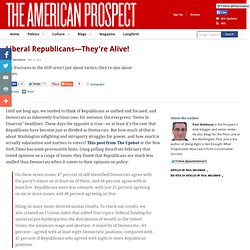
These days the opposite is true—or at least it's the case that Republicans have become just as divided as Democrats. But how much of that is about Washington infighting and intraparty struggles for power, and how much is actually substantive and matters to voters? This post from The Upshot at the New York Times has some provocative hints. Using polling data from February that tested opinions on a range of issues, they found that Republicans are much less unified than Democrats when it comes to their opinions on policy: On these seven issues, 47 percent of self-identified Democrats agree with the party’s stance on at least six of them.
Even though you have a relatively large number of issues being tested, it could be a function of the particular ones we're talking about. Texas State Historical Association (TSHA) FARM TENANCY.
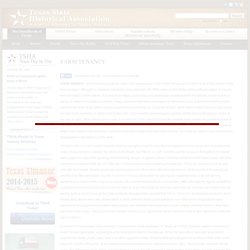
Since the colonial period, there have always been some Texas farmers who rented the land they farmed rather than owning it. Although no statistical information was collected until 1880, when United States census officials began to include that information in their returns, it is clear from letters, court cases, and newspaper advertisements that tenants rented land for a variety of reasons and paid in a variety of ways. Some farmers who possessed the resources to buy land rented until they were more familiar with Texas before making a permanent commitment to a specific location, while others rented because they lacked the resources necessary to obtain land of their own.
Sharecropping and tenant farming. Sharecropping was common throughout the South well into the twentieth century, and required the work of entire families.
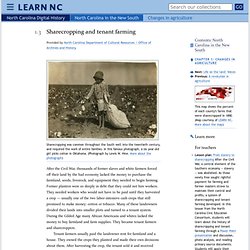
In this famous photograph, a six year-old girl picks cotton in Oklahoma. (Photograph by Lewis W. Hine. Sharecroppers - American History for Kids! Sharecropping - Black History. CARPETBAGGERS. Carpetbaggers & Scalawags - American Civil War. In general, the term “carpetbagger” refers to a traveler who arrives in a new region with only a satchel (or carpetbag) of possessions, and who attempts to profit from or gain control over his new surroundings, often against the will or consent of the original inhabitants.
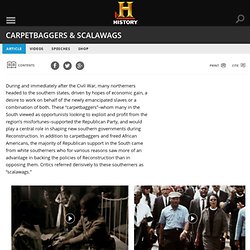
After 1865, a number of northerners moved to the South to purchase land, lease plantations or partner with down-and-out planters in the hopes of making money from cotton. At first they were welcomed, as southerners saw the need for northern capital and investment to get the devastated region back on its feet. They later became an object of much scorn, as many southerners saw them as low-class and opportunistic newcomers seeking to get rich on their misfortune. Fifteenth Amendment - Black History. 15th Amendment. Fourteenth Amendment - Black History. 14th Amendment. Amendment XIV Section 1.
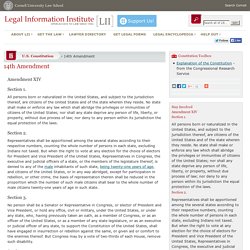
All persons born or naturalized in the United States, and subject to the jurisdiction thereof, are citizens of the United States and of the state wherein they reside. No state shall make or enforce any law which shall abridge the privileges or immunities of citizens of the United States; nor shall any state deprive any person of life, liberty, or property, without due process of law; nor deny to any person within its jurisdiction the equal protection of the laws. Section 2. Representatives shall be apportioned among the several states according to their respective numbers, counting the whole number of persons in each state, excluding Indians not taxed.
Section 3. Section 4. US House of Representatives: History, Art & Archives. Image courtesy of Library of CongressA New York state politician for more than a decade, Representative Henry Raymond served only one term in the House of Representatives.
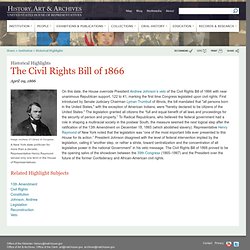
Ku Klux Klan - Facts & Summary. In 1915, white Protestant nativists organized a revival of the Ku Klux Klan near Atlanta, Georgia, inspired by their romantic view of the Old South as well as Thomas Dixon’s 1905 book “The Clansman” and D.W.

Griffith’s 1915 film “Birth of a Nation.” This second generation of the Klan was not only anti-black but also took a stand against Roman Catholics, Jews, foreigners and organized labor. It was fueled by growing hostility to the surge in immigration that America experienced in the early 20th century along with fears of communist revolution akin to the Bolshevik triumph in Russia in 1917. The organization took as its symbol a burning cross and held rallies, parades and marches around the country. At its peak in the 1920s, Klan membership exceeded 4 million people nationwide.